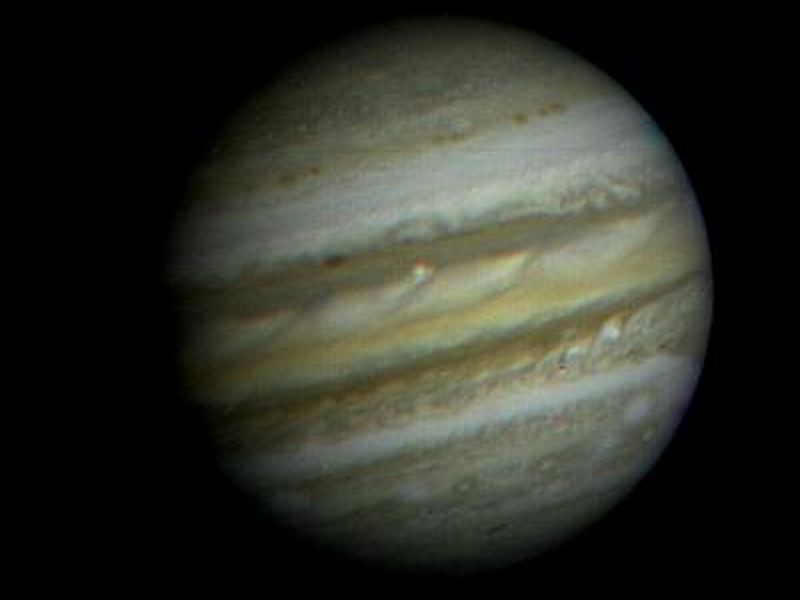How big is the monster?

Symmetries are captured by mathematical groups. And just as you can combine kinds symmetry to form new symmetries, you can combine groups to form new groups.
So-called simple groups are the building blocks of groups as prime numbers are the building blocks of integers [1].
Finite simple groups have been fully classified, and they fall into several families, with 26 exceptions that fall outside any of these families. The largest of these exceptional groups is called the monster.
The monster is very large, containing approximately 8 * 1053 elements. I saw a video by Richard Boucherds where he mentioned in passing that the number of elements in the group is a few orders of magnitude larger than the number of atoms in earth.
I tried to find a comparison that is closer to 8 * 1053 and settled on the number of atoms in Jupiter.
The mass of Jupiter is about 2 * 1027 kg. The planet is roughly 3/4 hydrogen and 1/4 helium by mass, and from that you can calculate that Jupiter contains about 1054 atoms.
Before doing my calculation with Jupiter, I first looked at lengths such as the diameter of the Milky Way in angstroms. But even the diameter of the observable universe in angstroms is far too small, only about 9 * 1036.
More on finite simple groups- A sort of opposite of Parkinson's law
- Orders of finite simple groups
- Overlap in the classification of finite simple groups
- Finite simple groups of Lie type
[1] The way you build up groups from simple groups is more complicated than the way you build integers out of primes, but there's still an analogy there.
The photo at the top of the post was taken by Voyager 1 on January 6, 1979.
The post How big is the monster? first appeared on John D. Cook.